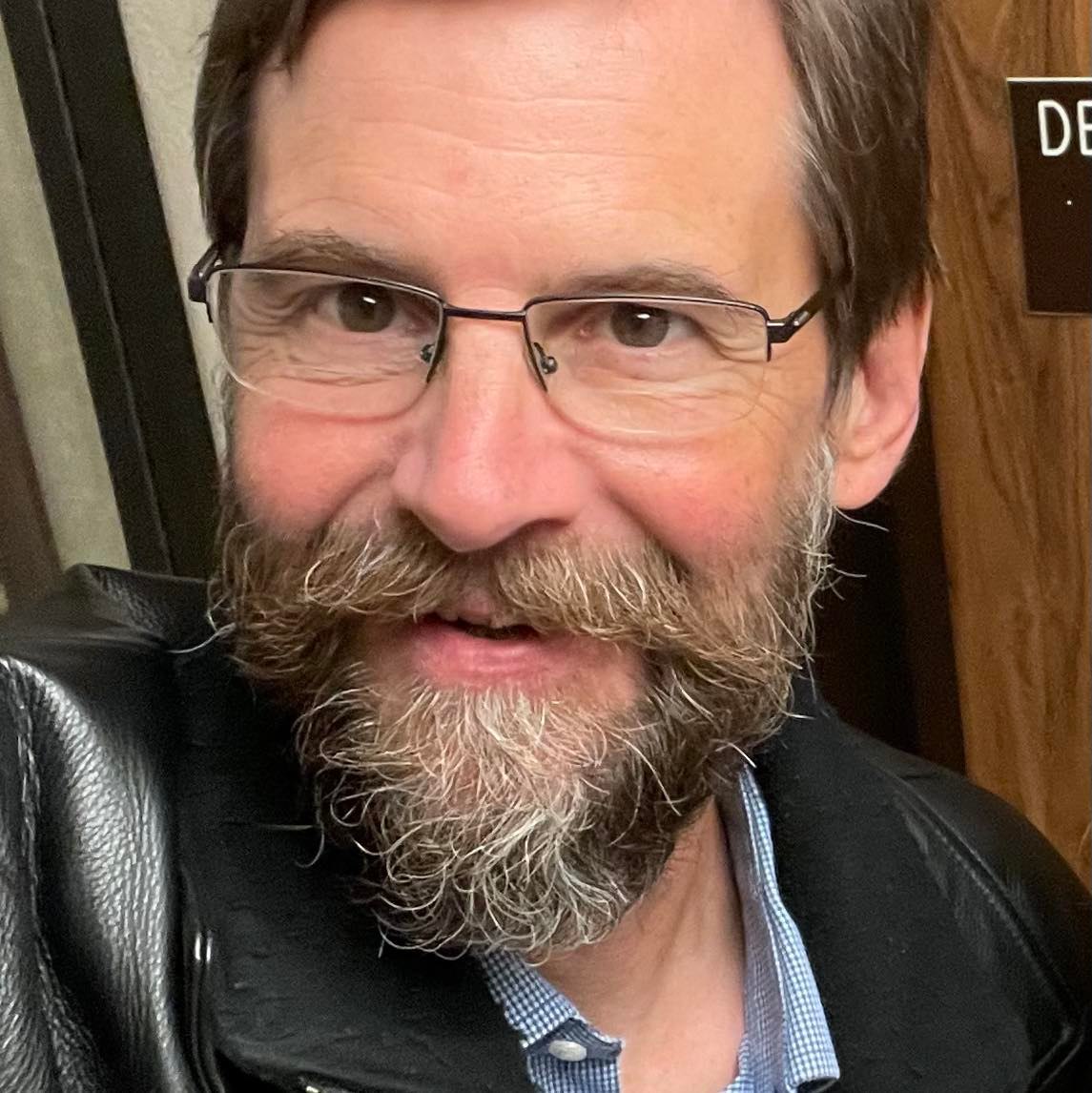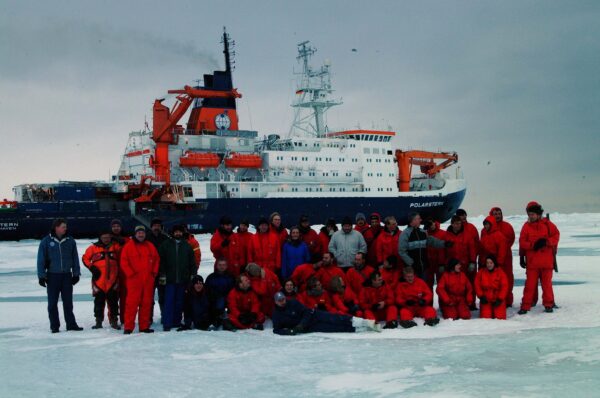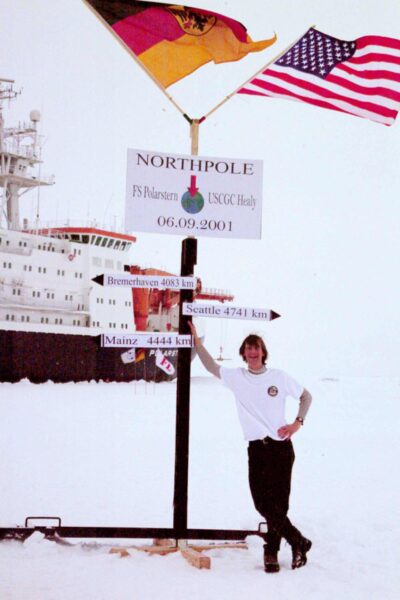
31 May Town Talk: Dr. Jon Snow on “Volcanoes of the Arctic North,” Mind-blowing, 6/7!
The Telluride Science Research Center hosts Dr. Jonathan Snow. His talk, titled “Ice and Fire; Volcanoes of the Arctic Ocean,” kicks off this summer’s 7-week series of Town Talks presented by Telluride Science. The event takes place at the Telluride Conference Center in Mountain Village on Tuesday, June 7, 2022, 6:30 p.m. Admission is free; cash bar opens at 6:00 p.m.

Dr. Jonathan Snow
At age 14, Dr. Jonathan E. Snow headed out in a small rowboat into the turbulent whitewater of Green River’s Desolation Canyon with his father and a group of desert enthusiasts. Camping under the striped stone walls of the canyon, a geologist on board shared stories of wondrous discoveries. Like so many of us denizens of the San Juans, tales of the mesmerizing layers of desert rocks inspired awe in young Snow. Although he was only in middle school, Snow knew in an instant he had found his passion: geology and the intricate history of how the Earth as we know it took shape.
It was the 70’s when Snow truly found his bliss, learning there was still much to discover about Earth’s ancient, mysterious, and formidable geological processes. That early burst of curiosity would grow long legs, ultimately developing into a multifaceted academic career in geology and oceanography and taking Snow on adventures into some of the least familiar corners of the Earth, from the North Pole to the depths of the oceans, via ship, ski, and submarine.
“When I was an undergraduate my professor took me on a field trip and, sitting around the campfire, I asked him, ‘Is somebody going to pay me the rest of my life if I do stuff like this and major in geology?’ And my professor said ‘Yeah,’” Snow recalled.
Sold!

After completing his bachelor’s degree in geology, Snow stumbled upon the next major chapter of his career somewhat accidentally:
“I ended up studying the kind of rocks I already worked on, but in the context of an oceanographic institution, working on the seafloor rather than up in the mountains someplace. And so instead of going camping all the time, I ended up on ships!”
While aboard those Big Blue Water oceanographic research vessels, Snow’s perception of geology shifted… As it turns out, the geology of the American West is nothing compared to the expansive (and ever-expanding) field of oceanographic geology.
With geology as his overarching interest, Snow went on to get his PhD in oceanography through a joint program between the Woods Hole Oceanographic Institution and MIT, setting his sights on the world’s (largely uncharted) ocean floor, particularly on mid-ocean ridges and seafloor spreading. He has since voyaged around the world to study undersea volcanoes.
“It’s a really interesting phenomenon to study where the tectonic plates spread apart,” Snow said in an interview, “This is called seafloor spreading. When the plates spread apart, they create new oceanic crust via a string of volcanoes that stretch through all the major oceans. They are volcanoes we typically don’t see because they’re small and under three miles of ocean water.”
Snow focuses specifically on undersea volcanoes in their very earliest stages, which might later become larger volcanoes like those in the Pacific’s renowned “Ring of Fire.” He also specializes in the physical and chemical processes by which volcanic magmas form, which affords us lots of information about the shifting of the Earth’s surface.
The scientist is quick to emphasize how much there still is to discover about the ocean floor and the importance of the volcanoes it hosts. Turns out we have a more comprehensive understanding of the surface of Mars than we do of our own ocean floors: 80% of the ocean floor has never been mapped, explored, or seen by humans, yet volcanic eruptions are responsible for the creation of more than 80 percent of our planet’s surface, enabling life on earth through an endless global dance of tectonic collisions and separations.
The scientific community largely accepts the fact that volcanic heat vents were home to the very first life forms, billions of years ago. Today, over 90% of volcanic activity occurs under the ocean rather than on land, so it goes largely unnoticed, unless of course, you are an oceanographic geologist.

“I’m going to go on another voyage in October,” Snow added, “And I will be diving to the ocean floor, doing the things that geologists do: looking at the rock formations and taking samples! It’s an amazing gift. I imagine it’s the closest thing to flying in space because you’re in this little capsule and you’re gonna be there a while.”
To recap, opening the 2022 Telluride Science Town Talks series, Snow’s presentation is about his Arctic Ocean expeditions, his inspiration, his research, and the importance of studying the world’s phenomenal geological processes.
About Telluride Science & Town Talks:
Telluride Science Town Talks are free public presentations by world-renowned scientists on topics of great current importance in science, technology, education, and public policy. The talks are moderated by Emmy and Peabody award-winning journalists, Judy Muller and George Lewis.
With a network of over 5,000 preeminent scientists from over 90 countries and 500 institutions, Telluride Science generates the fundamental knowledge base for new solutions in many important fields, including energy, medicine, water, climate, national security, and advanced materials for computing and manufacturing.
Visit telluridescience.org to learn more about Telluride Science and the capital campaign to transform the historic Telluride Depot into the Telluride Science & Innovation Center, a permanent home for Telluride Science and a global hub of inspired knowledge exchange and development where great minds meet to solve great challenges.


Sorry, the comment form is closed at this time.